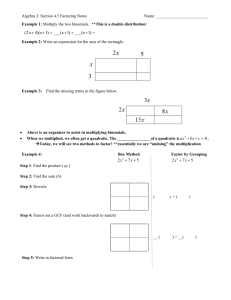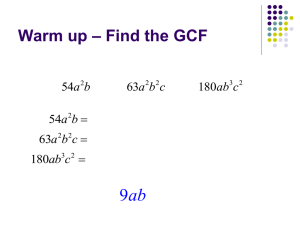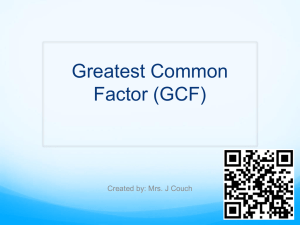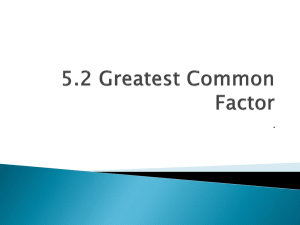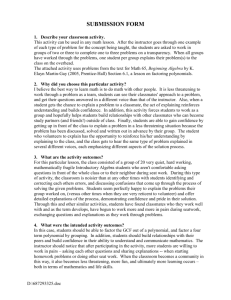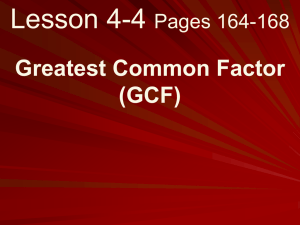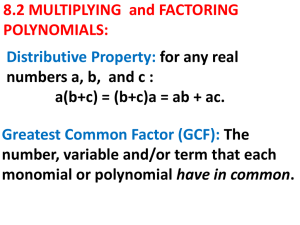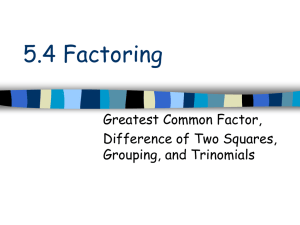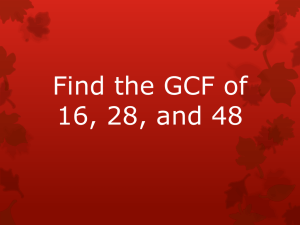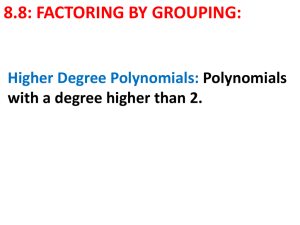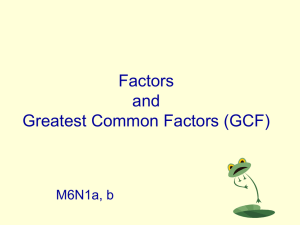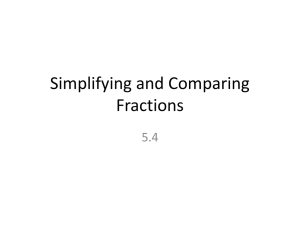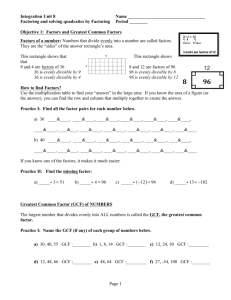Factoring Using the Distributive Property
advertisement
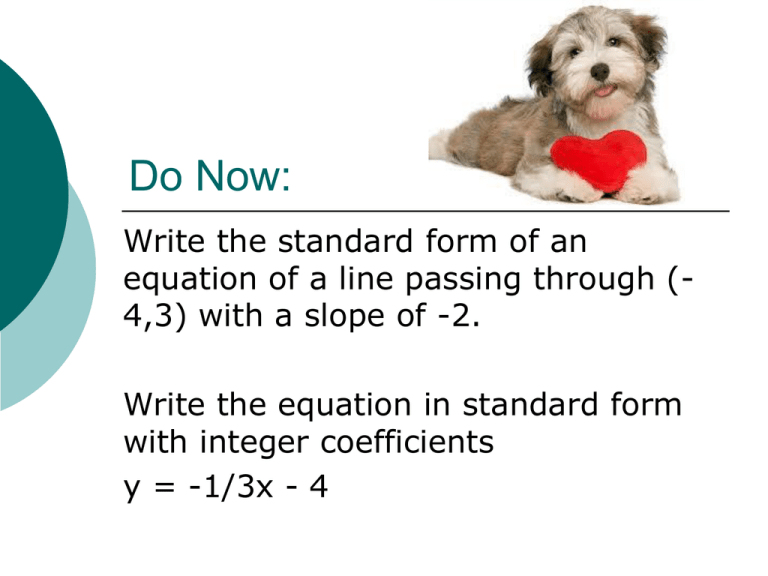
Do Now: Write the standard form of an equation of a line passing through (4,3) with a slope of -2. Write the equation in standard form with integer coefficients y = -1/3x - 4 Do Now: Worksheet – Match the correct bottle with its graph Factoring Using the Distributive Property GCF and Factor by Grouping 1) Factor GCF of 12a2 + 16a 12a2 =2 2 3 a a 16a = 2 2 2 2 a 2 2 a = 4a 12a 16a 2 Use distributive property 4a (3a) 4a (4) 4a (3a 4) PRIME POLYNOMIALS A POLYNOMIAL IS PRIME IF IT IS NOT THE PRODUCT OF POLYNOMIALS HAVING INTEGER COEFFICIENTS. TO FACTOR A PLYNOMIAL COMPLETLEY, WRITE IT AS THE PRODUCT OF • MONOMIALS • PRIME FACTORS WITH AT LEAST TWO TERMS TELL WHETHER THE POLYNOMIAL IS FACTORED COMPLETELY 2X2 + 8 = 2(X2 + 4) YES, BECAUSE X2 + 4 CANNOT BE FACTORED USING INTEGER COEFFICIENTS 2X2 – 8 = 2(X2 – 4) NO, BECAUSE X2 – 4 CAN BE FACTORED AS (X+2)(X-2) Using GCF and Grouping to Factor a Polynomial 2) Factor (4ab 8b)(3a 6) 4b (a 2) 3(a 2) (4b 3) (a 2) First, use parentheses to group terms with common factors. Next, factor the GCF from each grouping. Now, Distributive Property…. Group both GCF’s. and bring down one of the other ( ) since they’re both the same. Using GCF and Grouping to Factor a Polynomial 3) Factor (6 x 15x)(8x 20 ) 2 3x (2 x 5) 4 (2 x 5) (3x 4) (2 x 5) First, use parentheses to group terms with common factors. Next, factor the GCF from each grouping. Now, Distributive Property…. Group both GCF’s. and bring down one of the other ( ) since they’re both the same. Using GCF and Grouping to Factor a Polynomial 4) Factor (2a 6a)(3a 9) 2 2a (a 3) 3 (a 3) (2a 3) (a 3) First, use parentheses to group terms with common factors. Next, factor the GCF from each grouping. Now, Distributive Property…. Group both GCF’s. and bring down one of the other ( ) since they’re both the same. Using the Additive Inverse Property to Factor Polynomials. When factor by grouping, it is often helpful to be able to recognize binomials that are additive inverses. 7 – y is y – 7 By rewriting 7 – y as -1(y – 7) 8 – x is x – 8 By rewriting 8 – x as -1(x – 8) Factor using the Additive Inverse Property. 5) Factor (35 x 5 xy)( 3 y 21) 5x (7 y ) 3( y 7) 5x (1) ( y 7) 3 ( y 7) 5x ( y 7) 3 ( y 7) (5x 3) ( y 7) Factor using the Additive Inverse Property. 6) Factor( c 2cd)(8d 4 ) c (1 2d ) 4 (2d 1) c (1)(2d 1) 4 (2d 1) c(2d 1) 4 (2d 1) (c 4) (2d 1) There needs to be a + here so change the minus to a +(-15x) 7) Factor 10 x 14 xy 15x 21y 2 (10x 14xy)((15x) 21y) •Now group your 2 common terms. •Factor out each sets GCF. •Since the first term is negative, factor out a negative number. •Now, fix your double sign and put your answer together. 2x(5x 7 y) (3)(5x 7 y) (2 x 3) (5x 7 y) There needs to be a + here so change the minus to a +(-12a) 8) Factor 8ax 6 x 12a 9 8 ax 6 x ( 12 a ) 9 ( ) ( ) •Now group your common terms. •Factor out each sets GCF. •Since the first term is negative, factor out a negative number. •Now, fix your double sign and put your answer together. 2x (4a 3) (3) (4a 3) (2 x 3) (4a 3) Summary A polynomial can be factored by grouping if ALL of the following situations exist. There are four or more terms. Terms with common factors can be grouped together. The two common binomial factors are identical or are additive inverses of each other.
